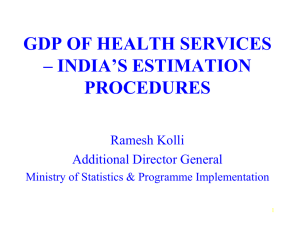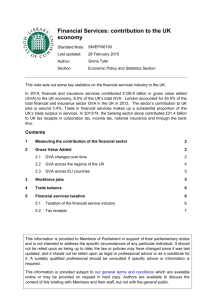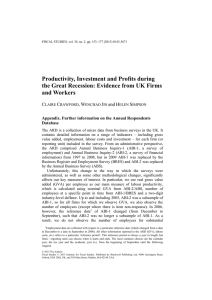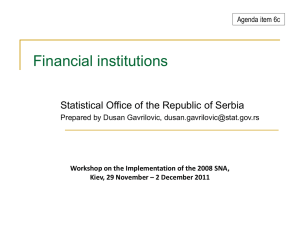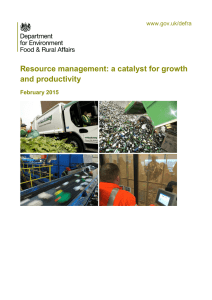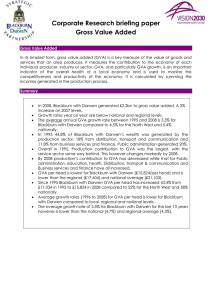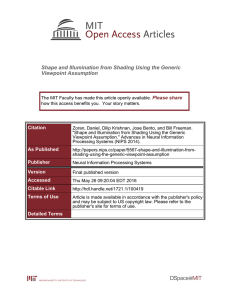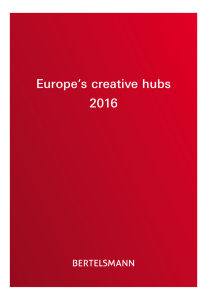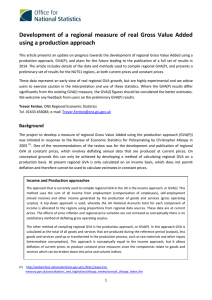Optimization of Staff Planning at Genève Aéroport
advertisement
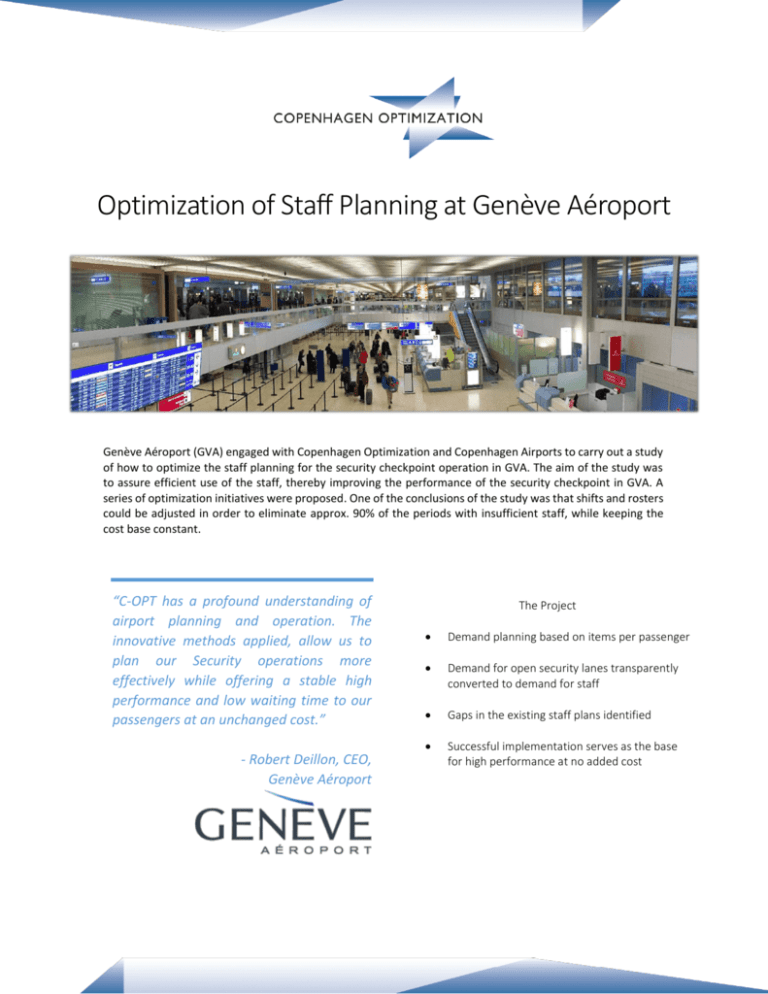
Optimization of Staff Planning at Genève Aéroport Genève Aéroport (GVA) engaged with Copenhagen Optimization and Copenhagen Airports to carry out a study of how to optimize the staff planning for the security checkpoint operation in GVA. The aim of the study was to assure efficient use of the staff, thereby improving the performance of the security checkpoint in GVA. A series of optimization initiatives were proposed. One of the conclusions of the study was that shifts and rosters could be adjusted in order to eliminate approx. 90% of the periods with insufficient staff, while keeping the cost base constant. “C-OPT has a profound understanding of airport planning and operation. The innovative methods applied, allow us to plan our Security operations more effectively while offering a stable high performance and low waiting time to our passengers at an unchanged cost.” - Robert Deillon, CEO, Genève Aéroport The Project Demand planning based on items per passenger Demand for open security lanes transparently converted to demand for staff Gaps in the existing staff plans identified Successful implementation serves as the base for high performance at no added cost Facts The Central Security Checkpoint (CSC) at GVA handled 6.3 million passengers in 2014 with 14 x-ray machines available. The staff base is a combination of staff employed by GVA and staff supplied by a third party supplier. The staff plans for the GVA employed staff are largely fixed whereas there is a larger degree of flexibility in the third party staff. The total employee base at the CSC is approx. 240. The Study The study commenced with a thorough analysis of demand for open security lanes. The driver of the demand for open lanes is the number of items each passenger carries. Thus, the analysis established the items per passenger as well as the item throughput per lane. Applying these rates to the expected passenger presentation, a lane opening plan was created that would secure that waiting time targets are kept. The next step was to create transparency in the transformation of open lanes into a demand for staff. On top of the staff required to open lanes, the supply of staff must also allow for breaks and staff used for other functions like staff security or the transfer security checkpoint. With the demand for staff in place, the optimization of staff planning was next. To build the base for optimizing the staff planning, the first step was a review of the current staff plans to identify gaps compared to demand. With the gaps identified, a number of initiatives were pinpointed: Determine actual application of breaks Introduce clearly defined buffers Plan according to waiting time targets Increase trust in the plans Plan for each day individually - from budget to day of operation Introduction of new shifts in the staff plans In total, the initiatives would, upon successful implementation, allow GVA to eliminate approx. 90% of the periods with insufficient staff. This allows GVA to sustain a performance of 85% of passengers waiting less than 5 minutes for at least 2016 and 2017 without adding additional staff. Want to know more? Kasper Hounsgaard, Managing Partner Copenhagen Optimization Telephone: +45 51 34 10 69 Email: hounsgaard@copenhagenoptimization.com

